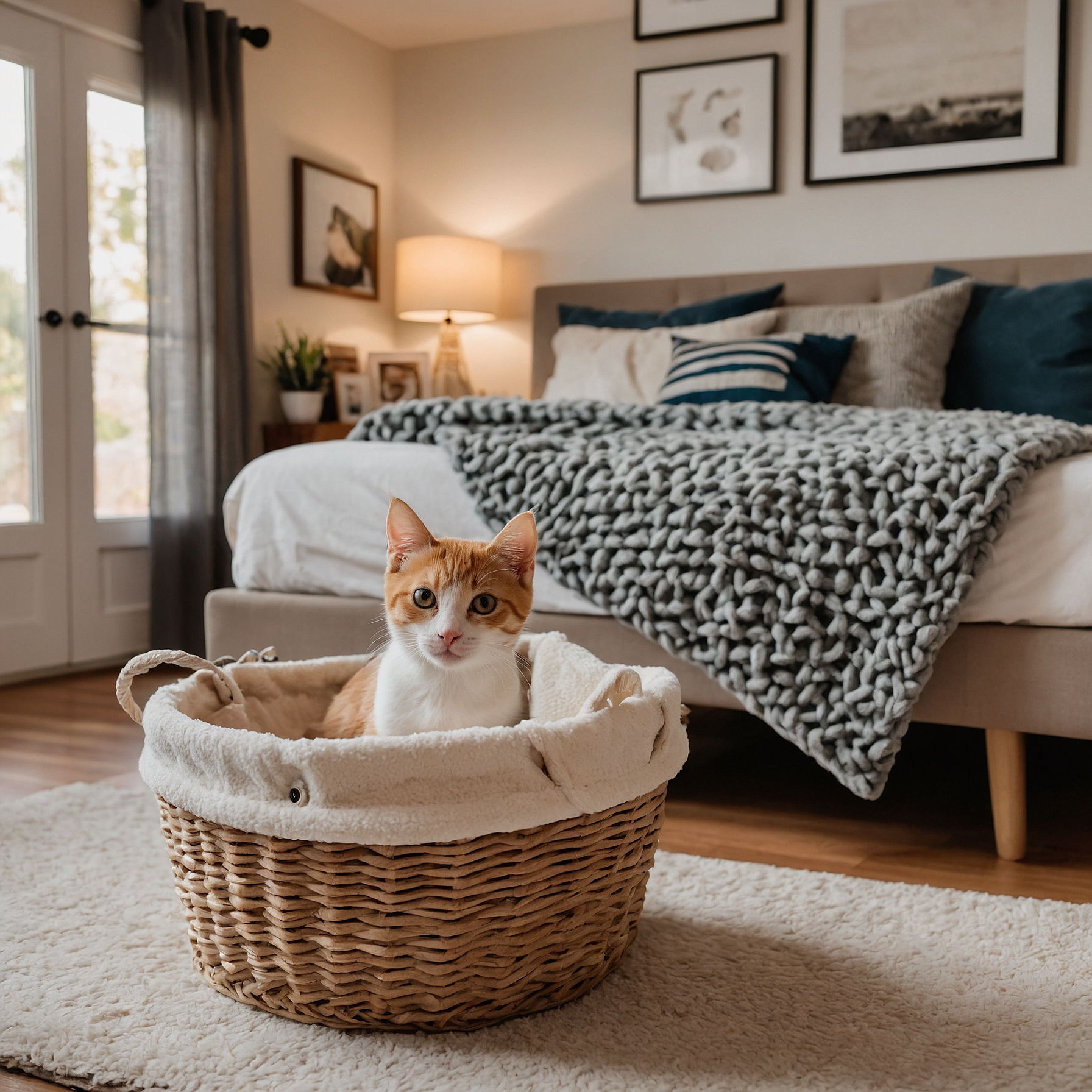Preparing your home for a new pet is essential for a smooth transition. Learn how to create a safe space, stock up on essentials, and ensure your home is pet-ready.
Bringing a new pet home is an exciting experience, but preparation is key for a smooth transition. Whether you’re adopting a dog, cat, or other furry friend, setting up your home properly ensures both you and your new pet have a happy and safe start. Here’s what you need to know before their paws step through your door.
1. How to Prepare Your Home for a New Pet: Create a Safe Space
The first step in preparing for your new pet is to create a safe, designated space. Choose a quiet, cozy corner of your home where your pet can retreat to when they feel overwhelmed or need rest. This space should include a bed, food and water bowls, and a few toys to help them feel comfortable. A dedicated safe space helps your pet acclimate to their new surroundings and provides a retreat when they need to relax.
It’s essential to keep this area free from too much noise or foot traffic, as a new pet may feel anxious in a busy environment. A calm, quiet spot will be their sanctuary while they adjust to their new home.
2. Remove Hazards: Pet-Proofing Your Home
Before your new pet arrives, it’s crucial to pet-proof your home. Pets, especially young ones, are curious and often explore with their mouths. Remove any hazards, including unsecured wires, toxic plants, and small objects that could be ingested. Make sure to store cleaning products, medications, and any harmful chemicals in places your pet can’t reach.
Pet-proofing isn’t just about eliminating immediate hazards; it’s also about creating a pet-friendly environment that ensures safety and comfort for your new companion. Installing childproof latches on cabinets or securing trash cans are simple steps that can help avoid accidents and keep your pet safe.
3. Stock Up on Essentials Before Arrival
Preparing your home for a new pet also means stocking up on the necessary essentials. Get pet food, bowls, a litter box (if applicable), leashes, collars, ID tags, grooming supplies, and toys ahead of time. Having these items on hand ensures you’re ready for the transition as soon as your pet arrives.
If you’re adopting a dog, ensure you have a proper crate or bed for their size. For cats, consider purchasing scratching posts, cozy hiding spots, and litter boxes. Don’t forget the important items like grooming brushes or nail clippers to keep your pet comfortable and healthy.
4. How to Prepare Your Home for a New Pet: Establish House Rules Early
Consistency is key when it comes to training your new pet. Before they arrive, decide where they can and can’t go in your home. Whether you want to designate certain areas as pet-friendly or keep them out of certain rooms, establish these house rules early. Consistent boundaries help prevent future behavioral issues.
For example, if you don’t want your pet on the furniture, start reinforcing this rule from day one. Be patient and consistent, as it can take time for your new pet to understand what is and isn’t allowed.
5. Schedule a Vet Visit: Ensure Your New Pet’s Health
Scheduling a vet visit shortly after bringing your new pet home is a vital part of the preparation process. A wellness checkup ensures your pet is healthy and up to date on vaccinations, flea treatments, and any other medical needs. If you’ve adopted a pet from a shelter or rescue, the vet visit can help assess their overall health and address any concerns.
Ask your vet for advice on pet care, including tips on feeding, grooming, and vaccinations. This is also a great time to discuss microchipping, which can help ensure your pet’s safety if they get lost.
6. How to Prepare Your Home for a New Pet: Provide Mental and Physical Stimulation
Beyond the basics of creating a safe space and pet-proofing, providing mental and physical stimulation is key to helping your new pet feel comfortable and happy in their new home. For dogs, regular walks and outdoor activities are crucial, while cats benefit from interactive toys and scratching posts. Providing ample exercise and enrichment prevents boredom and helps strengthen your bond with your new pet.
Enrichment activities can include puzzle toys, training sessions, or even setting up a window perch for your cat to watch the outside world. These activities will help them adjust to their new environment and keep their minds engaged.
7. Prepare for the First Few Days: Be Patient with Your New Pet
The first few days with your new pet are crucial for building trust and a relationship. Understand that your pet may need time to adjust to their new environment. Be patient with them as they explore their space and start building a routine. Your new pet may not feel immediately comfortable, so give them the space and time they need to settle in.
Avoid overwhelming your pet with too many visitors or activities in the first few days. Allow them to come to you on their own terms, and avoid scolding them if they make mistakes. The goal is to create a loving and supportive environment where your new pet feels safe and welcomed.
How to Prepare Your Home for a New Pet: A Smooth Transition
Proper preparation is key to ensuring your new pet settles in quickly and comfortably. By following these tips on creating a safe space, removing hazards, and stocking up on essentials, you can help make your pet’s transition into their new home as smooth as possible. Remember that patience, consistency, and care are essential to helping your new pet feel welcome.
Read More


